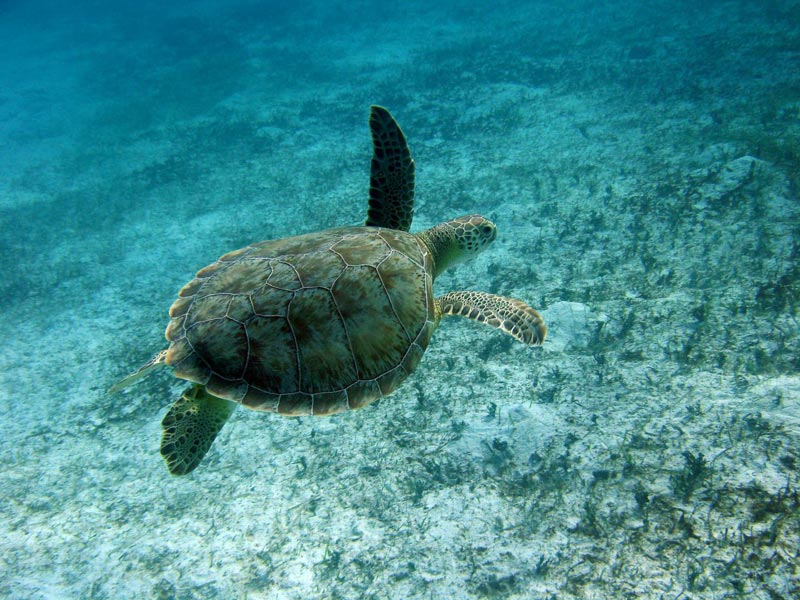

Geopolitical instability across the region may cause delays to the successful implementation of new conservation measures.
Credit: Peter Richardson
A new study led by the University of Exeter has identified two major foraging grounds of the Mediterranean green turtle and recommends the creation of a new Marine Protected Area (MPA) to preserve the vulnerable species.
The researchers tracked green turtles from breeding grounds in Cyprus, Turkey, Israel and Syria to provide the most comprehensive set of distribution data ever assembled for the species in the Mediterranean.
The study, published today in the journal Diversity and Distributions, identifies ten foraging grounds, with two major hotspots in Libya accounting for more than half of the turtles which were tracked to conclusive endpoints.
Professor Brendan Godley of the Centre for Ecology and Conservation at the University of Exeter, the paper's senior author, said: “We know where the major nesting grounds are but a robust understanding of where marine turtles go during migration and foraging phases is crucial to the development of effective conservation strategies. Of the two key habitats identified in this study – the Gulf of Bomba and the Gulf of Sirte – only the former is currently recognised as a biodiversity hotspot. The protection of both would benefit a high proportion of the adult green turtle population in the Mediterranean.”
The species has suffered extreme declines in the past due to heavy overharvesting under British administration during the 20th century for meat and turtle soup. Additionally, within the region, the magnitude of marine turtle bycatch – the unwanted fish and marine creatures trapped by commercial fishing – is considered unsustainable by many conservationists who call for urgent action.
In this latest study, 34 female green turtles were satellite tracked from breeding grounds for a total of 8,521 tracking days between 1998 and 2010.
Dr Kim Stokes, lead author, added: “Although this study has led to a quantum leap in our knowledge of the species in the Mediterranean, there is clearly an urgent need to extend the tracking to some of the other major nesting beaches in Eastern Turkey and Cyprus to ensure we fully map the major migratory corridors and foraging grounds.”
For more information contact:
University of Exeter Press Office
+44 (0)1392 722405 or 722062
pressoffice@exeter.ac.uk
About the University of Exeter
The University of Exeter is a Russell Group university and in the top one percent of institutions globally. It combines world-class research with very high levels of student satisfaction. Exeter has over 18,000 students and is ranked 8th in The Times and The Sunday Times Good University Guide league table, 10th in The Complete University Guide and 12th in the Guardian University Guide 2014. In the 2008 Research Assessment Exercise (RAE) 90% of the University's research was rated as being at internationally recognised levels and 16 of its 31 subjects are ranked in the top 10, with 27 subjects ranked in the top 20. Exeter was The Sunday Times University of the Year 2012-13. The University has four campuses. The Streatham and St Luke's campuses are in Exeter and there are two campuses in Cornwall, Penryn and Truro. In a pioneering arrangement in the UK, the Penryn Campus is jointly owned and managed with Falmouth University. At the campus, University of Exeter students can study programmes in the following areas: Animal Behaviour, Conservation Biology and Ecology, English, Environmental Science, Evolutionary Biology, Geography, Geology, History, Human Sciences, Mathematics and the Environment, Mining and Minerals Engineering, Politics and International Relations, Renewable Energy and Zoology. The University has invested strategically to deliver more than £350 million worth of new facilities across its campuses in the past few years; including landmark new student services centres – the Forum in Exeter and The Exchange at Penryn – together with world-class new facilities for Biosciences, the Business School and the Environment and Sustainability Institute. There are plans for another £330 million of investment between now and 2016.
http://www.












